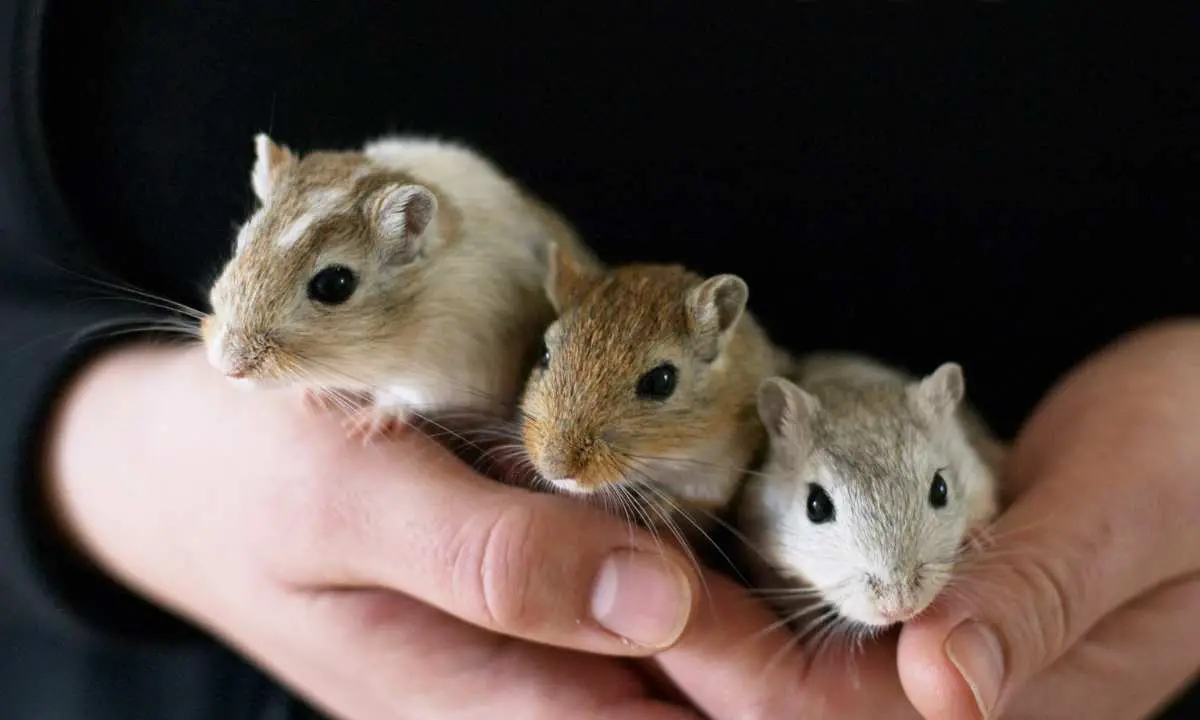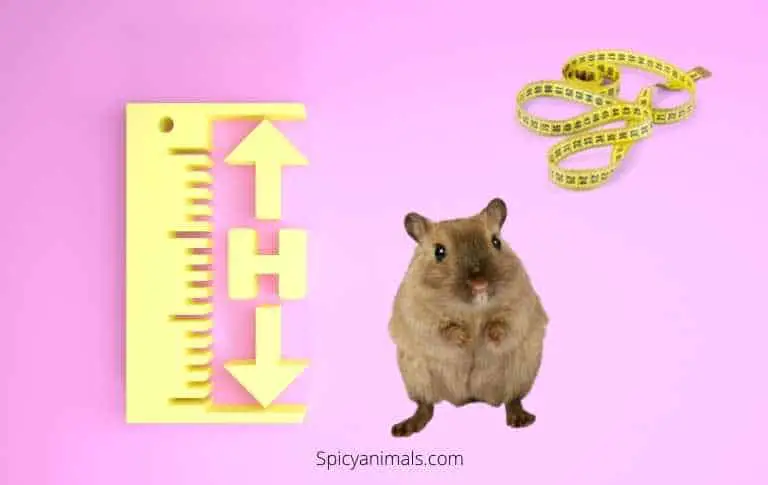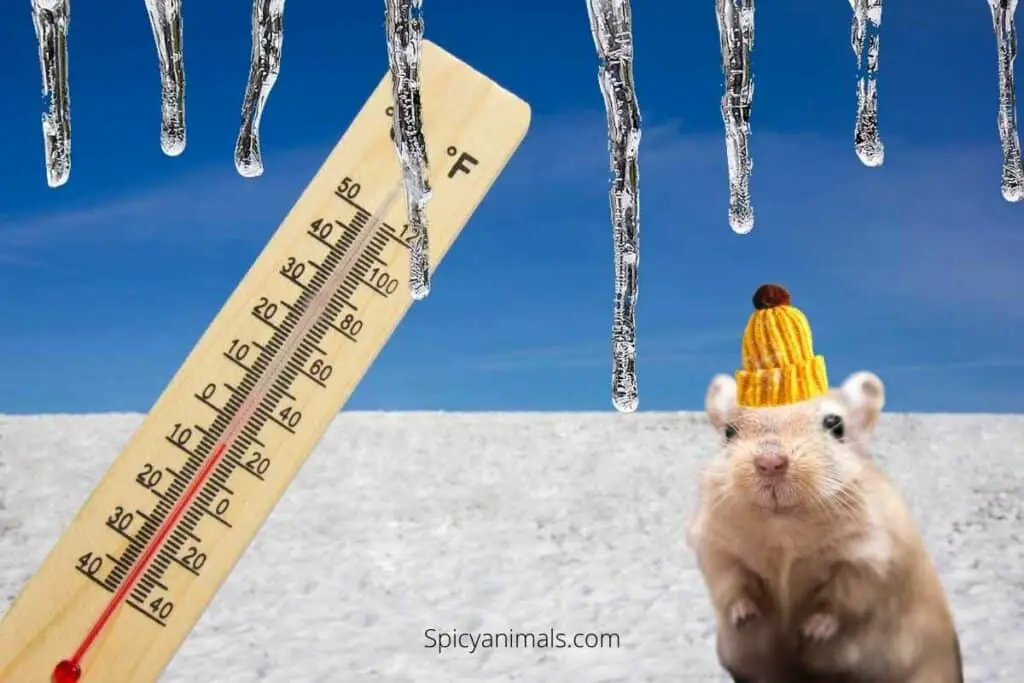Gerbil breeding and genetics is a fascinating topic for gerbil breeders, pet owners, and scientists. Studying the genetics of gerbils can provide insight into the species’ evolution and behavior. It can also be used for practical purposes such as breeding specific gerbil types.
In this article, we’ll discuss the basics of breeding and genetics in gerbils, including the history and current state of research.
Table of Contents
What is a Gerbil?
Gerbils are small, burrowing rodents that are very popular as pets. They usually measure around 5-7 inches long, including their tails. Gerbils have short fur and a tail that is relatively longer than their body. The color and pattern of the fur vary greatly among individual animals, and coat colors range from sandy brown to grayish white in color. These animals exhibit a wide range of behavior, and intelligence, and easily adapt to living in a variety of environments.
When it comes to breeding gerbils for pets, the focus is often on their physical characteristics. For gerbil breeders, this includes the color and pattern of the fur, as well as tail length and ear size. It’s important to be aware of potential genetic issues when selecting animals with specific traits in order to ensure healthy offspring down the road. From a genetics perspective determining the parents’ genotypes can produce two or more possible offspring genotypes resulting in various outcomes when it comes to selecting gerbil traits for breeding purposes.

Gerbil Breeding
Breeding gerbils can be a rewarding experience. Not only do you get to watch as they grow and mature, but it also gives you the opportunity to create genetically unique animals. Regardless of why you’re interested in breeding gerbils, learning the basics of gerbil breeding and genetics can be very beneficial.
In this article, we’ll dive into all the information you need to know about gerbil breeding and genetics.
Selecting Gerbils for Breeding
Selecting good breeders is an important part of the gerbil breeding process. When selecting gerbils to breed, you’ll want to pay attention to the individual animals’ physical traits, health, and behavioral characteristics.
Physical Traits: To select the best gerbils for breeding, it is important to look for a variety of physical traits. Females should be well-rounded with good muscle development and a large healthy-looking coat. Avoid males with physical defects or injuries as these will affect the resulting litter. Males’ jaws should be strong and symmetrical with no bumps or bite marks from fighting other males.
Health: Health should always be considered when selecting gerbils for breeding. Unfortunately, common illnesses such as Tyrantovirus can afflict some gerbil populations so avoid buying any young gerbils from populations that have been exposed to this virus in the past. Have each animal checked by a vet before introducing them into your breeding program and make sure they receive regular check-ups once they enter the breeding program so any potential health problems can be quickly identified and treated.
Behavioral Characteristics: When selecting gerbils for breeding, you’ll also want to pay attention to their behavioral characteristics as these can have an effect on offspring. Avoid pairing gerbils that are aggressive towards one another or skittish towards humans as this could lead to offspring that display similar behavior patterns which may not be desirable in domestic animals intended for pet use.
Other behavioral traits worth noting include cleaning up after themselves when given food and bedding materials, being active throughout the day rather than primarily at night, and easy compliance during handling sessions which are all qualities found in desirable pets that make excellent pets!
Mating and Reproduction
Mating and reproduction of gerbils is an important part of keeping and caring for animals. It is important to understand the process in order to prevent unwanted litter or health problems that can result from improper pairing.
Gerbils reach sexual maturity at around four weeks of age and are therefore capable of reproducing at this time. Males generally reach sexual maturity earlier than females, so they should not be housed together until the female is ready. Mating occurs when a male gerbil mounts a female, at which point spermatogenesis will begin in the male’s testicles if the ganglia contain mature sperm cells prior to mating.
During the breeding process, it is important to have both gerbils tested for any genetic abnormalities that could be passed on to any potential offspring using Polymerase Chain Reaction (PCR). If there are any indications that either animal may have a genetic problem, it would be best to avoid matings between them. Additionally, health risks may exist when mating related individuals such as siblings or close cousins so it is important to know family histories before making any matings.
Females will give birth approximately 24-26 days after mating, typically producing litters of five or six pups although this may vary depending on genetics and other factors such as nutrition and environmental conditions. During the breeding season (reproduction season) a female can produce up to three litters per year with each litter containing anywhere between two and eight pups. After the pups are born it is advisable to move them into separate housing after two weeks until they can take care of themselves.
Care of Pregnant Gerbils
Before attempting to breed gerbils, it is important to understand how to properly care for them both before and during the pregnancy. This will help make sure that your gerbils have a healthy litter and that the breeding process goes smoothly.
First of all, make sure that you select healthy males and females for breeding purposes; if any of the animals are sick or do not appear to be in good condition, do not use them for breeding. Additionally, avoid selecting gerbils from the same family line for mating as this can lead to inbreeding problems.
For a safe environment, provide nesting materials such as shredded paper or bark and ensure that the cage is spacious enough so they can move around easily without stress. Place food items such as grains, fruits and vegetables in larger amounts so they consume enough nutrients during pregnancy. Offer plenty of fresh water on a daily basis as pregnant gerbils tend to drink more than usual. Maintain cleanliness inside the cage and avoid overcrowding it with too many cages at once.
It’s important to pay close attention to your pregnant gerbils so you can monitor their behavior before and after giving birth; this will allow you to spot any potential health issues and address them immediately. After giving birth, keep disturbances in the environment minimal since newborn gerbils are delicate creatures; loud noises or too much light may cause stress on them which can interfere with the bonding between mother and babies.
Care of Newborn Gerbils
It is important to remember that newborn gerbils require special care. The mama gerbil may reject her litter if disturbed, so handle with extreme care. This time for them is particularly vulnerable, and it’s important to be conscientious about cleanliness and nutrition for the health of both the mother and the litter.
The first few days are critical to their survival, so removing stressors from their environment during this time is important. Try to keep noise and other distractions in the area where they’re located at a minimum. It’s also essential to keep up food and water supplies — even though the mother should largely bear this responsibility — as she may not do an excellent job due to inexperience or illness. Additionally, provide a safe nesting material in their cage such as pellets of paper or cotton wool balls (never with sharp edges).
Inspect the brood two times a day very carefully without disturbing them too much; make sure each pup has mama’s attention as well as access its own food sources, especially if there are too many pups or if any of them seem too small or frail when compared with its siblings. If you notice any changes in their habits you should contact a vet immediately; injuries or minor diseases can quickly become more serious if not cared for properly. Similarly, you should act quickly if you notice any signs of neglecting from mama; sometimes mothers can suffer postpartum depression after giving birth and need help caring for their young ones appropriately – either placing them with another adult female can do wonders for a struggling mom.
Lastly, always choose adoption instead of buying since there are many gerbils out there in need of good homes!
Genetics of Gerbils
Gerbil breeding and genetics plays an important role in owning gerbils as pets. By understanding the basics of genetics, you can become a better gerbil breeder and owner.
Genetics is the study of how traits are inherited from one generation to the next and can determine the coat, colour and size of the gerbil.
In this section, we’ll go over the basics of gerbil genetics and how it affects breeding.
Understanding the Basics of Genetics of Gerbils
When looking at gerbil breeding and genetics, it’s important to understand the basics of genetics. Genes are sections of the DNA strand that contain instructions for a specific trait. Genes can be dominant, meaning that if an animal has one copy of a gene it will have the trait associated with that gene, or recessive, meaning the animal must have two copies of a gene to display the associated traits. Dominant genes take precedence over recessive ones.
Some common traits in gerbils are coat color and length (long-haired vs short-haired), coat pattern, ear shape and size (large ears or small ears), tail length and shape, head shape and size, paw/toe structure/dewclaw presence as well as albinism. Understanding where these traits come from provides insight into how certain combinations of genes can result in unique results among offspring.
Gerbils inherit one set of genes from each parent, however, some genetic mutations occur when animals reproduce which can lead to unique expressions different from the parents’ original genetic makeup. These mutations comprise a random element when discussing genetic combinations which is important to recognize when evaluating pedigrees for a successful breeding program.
By familiarizing yourself with how gerbil genetics work, you’ll be able to breed healthy animals with desirable features while avoiding any health issues that could arise due to inbreeding or outbreeding too far-distant relatives in your breeding programs. Now that we’ve covered some basic terminology around genes and what physical attributes they may influence let’s move on to look at how understanding this information can help with producing healthy animals through responsible breeding techniques.
Understanding Inheritance Patterns
Inheritance patterns can be complex and difficult to understand. However, they are an essential part of breeding your own gerbils. Knowing how traits are passed from one generation to the next can help you make informed decisions about your gerbil breeding program.
The main way inheritance patterns work is through the combination of genes that parents pass down to their offspring. During gerbil reproduction, each parent contributes genetic material in the form of chromosomes and alleles (two forms of a single gene). As the two sets of genetic information come together, certain combinations result in different physical characteristics in their offspring (the expression of certain traits).
One example is coat color inheritance; gerbils can have either black or agouti coats! Agouti gene (A) is dominant over black (a), so if a parent has A/a alleles, then their offspring will have agouti coats. If both parents have A/A alleles, then all their offspring will also have agouti coats. However, if one parent has A/a and one parent has a pair of recessive black alleles (aa), then half their offspring will have agouti coats while the other half will have black coats!
In addition to single genes being inherited like this, complex patterns of inheritance occur when multiple genes control a trait together. These can include epistasis (the masking or altering effect one gene has on another), sex-linked traits (inherited differently in male and female individuals), recessive or dominant traits, and multiple factors all influencing a trait at once! Understanding these intricate relationships between genes as well as how the environment affects them allows us to create animals with desired characteristics.
Common Coat Colors
Gerbils come in a variety of coat colors, some of which are the results of certain genetic traits. Here is a quick look at some common gerbil coat patterns and the phenotypes associated with them.
Agouti: This coat type is characterized by an even mix of lighter and darker-colored guard hairs. Common agouti colors include agouti, cinnamon, red-eyed black (REB), mottled and sable.
Rutile: This purposeful mutation was created in 2015, and has since become a popular choice among gerbil breeders. It has bright reddish eyes that contrast nicely with its monochromatic fur, making it nearly unmistakable. The pattern is most often seen in cinnamon, grey-dun, or black varieties.
Lilac: These gerbils have silver-white undertones along their fur that give the appearance of having been dyed lilac or purplish-blue tones. They typically have tan eyes, although recessive genes could cause them to be brown or red-eyed.
Pastel: This pattern is most commonly found in dark gray and pale blue undertones—similar to the coloration found on Siamese cats—with lighter hue tips near their bellies, tails, and faces. Both red-eyed and black-eyed pastels can be bred together successfully to yield no noticeable difference between generations; however, if too many generations are bred together without outcrossing problems can start to arise within their population genetic structure due to unintended inbreeding depression issues caused by lack of diversity within livestock genetic lineages used for large scale herd operations across many agricultural industries not just exclusive to small livestock production systems as well known as family gerbil breeders do within homescales across multiple countries around the world.
Genetic Diseases
Gerbils, like all animals, are susceptible to various genetic diseases that are passed down from their parents. Some of the most common include allergies and mutations. These can manifest as allergies to pollen or other substances; physical defects in fur or markers such as missing patches of fur; or they may be more serious, such as teeth problems and cancer.
Successful breeders strive to breed the strongest and healthiest gerbils possible. To do this, they research the family trees of the gerbils they intend to use in breeding and make sure that no abnormalities show up in any of their recent relatives. Every effort should be made to eliminate potential weak points in certain lines and avoid producing offspring with congenital diseases.
In order to keep track of these weaknesses, some breeders opt for testing genetic predispositions by using DNA profiling techniques such as Microsatellite marker analysis (MSA). This can be done on specific groups of individuals or on whole populations; however, it is not always utilized due to the expense involved.
When done correctly, responsible MSA testing can provide future owners with a greater level of assurance about their choice of gerbil when dealing with otherwise untraced ancestry – reducing the risk that their animal may suffer from a variety of genetic disorders.
Conclusion
Gerbils are wonderful pets to have and can be great companions. Breeding gerbils can be a rewarding experience when done responsibly. Genetics is a key factor to help you achieve the desired physical characteristics in gerbils. With the right knowledge and dedication, you can have a successful gerbil breeding program.




